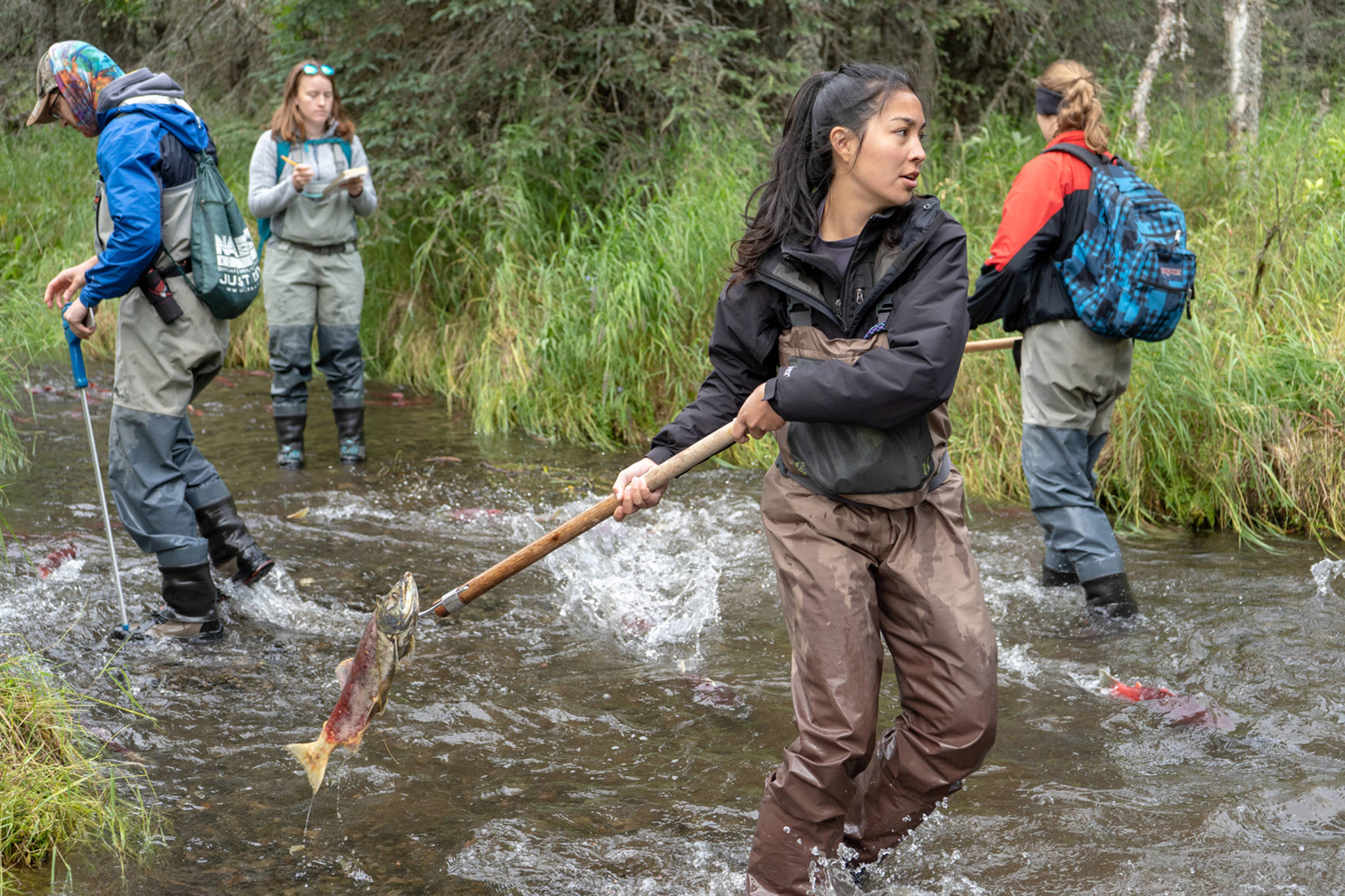With its network of tree-choked salmon streams, the Tongass National Forest has earned its moniker as the salmon forest.
It’s long been known that salmon fertilize forest growth. The fish contain marine nutrients like nitrogen. When salmon spawn and die in riparian areas, their carcasses feed the soil underneath, providing trees with nutrients otherwise unavailable.
Knowing that is one thing: it’s something most Alaskans grow up understanding. Measuring just how much salmon carcasses spur growth is another.
A long-running University of Washington salmon study in southwest Alaska has done just that. In a paper published Oct. 23 in the peer-reviewed journal “Ecology,” UW researcher Tom Quinn and colleagues have documented the growth of trees on one side of a river in southwest Alaska over the other.
The difference? Over 20 years of a fish count study, researchers flung sockeye salmon carcasses to only one side of Hansen Creek in the Bristol Bay region. It started out as an incidental decision — to avoid double counting fish, researchers decided to huck them onto the creek bank.
Quinn saw an opportunity for further research, electing to use only one side of the bank to gauge a possible effect.
“Tossing the carcasses to the left side started out just as a convenience to keep from counting the same fish twice. I thought at some point in the future, it would be kind of cool to see it if had an effect,” Quinn told UW media.
The paper, titled “A multi-decade experiment shows that fertilization by salmon carcasses enhanced tree growth in the riparian zone,” details how white spruce trees on one side of the creek grew faster than the non-fertilized side. Samples of 84 white spruce trees showed marine-derived nitrogen was incorporated into the new growth of trees on the enhanced bank.
The researchers threw 217,055 individual salmon, estimated to be over 600,000 pounds of fish, onto a 1.24-mile section of Hansen Creek over a 20 year period.
The effect was two-fold: trees on one side of the bank didn’t receive their customary dose of salmon feed, while trees on the other side received a second serving. The trees on the fertilized side weren’t noticeably taller, even though they grew faster. Trees on the salmon-enriched side started out shorter, which could explain the difference.
Quinn and his team took deep slices out of tree corps from white spruce on both sides of the stream. They examined growth of the tree rings during the 20-year period (1997-2016) as well as a 20-year period prior to the study (1977-1996), with growth measured in the earlier period serving as a control.

